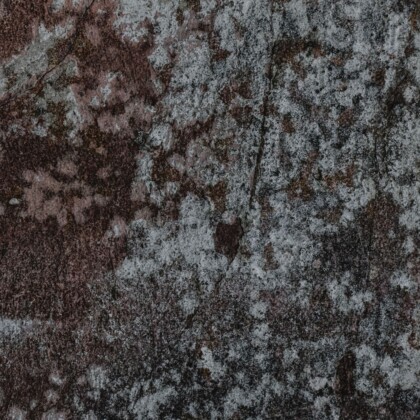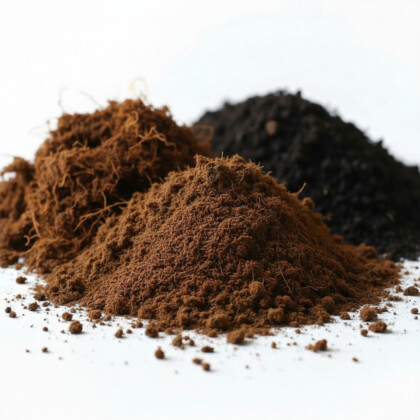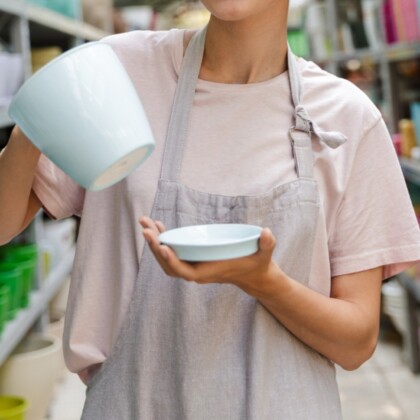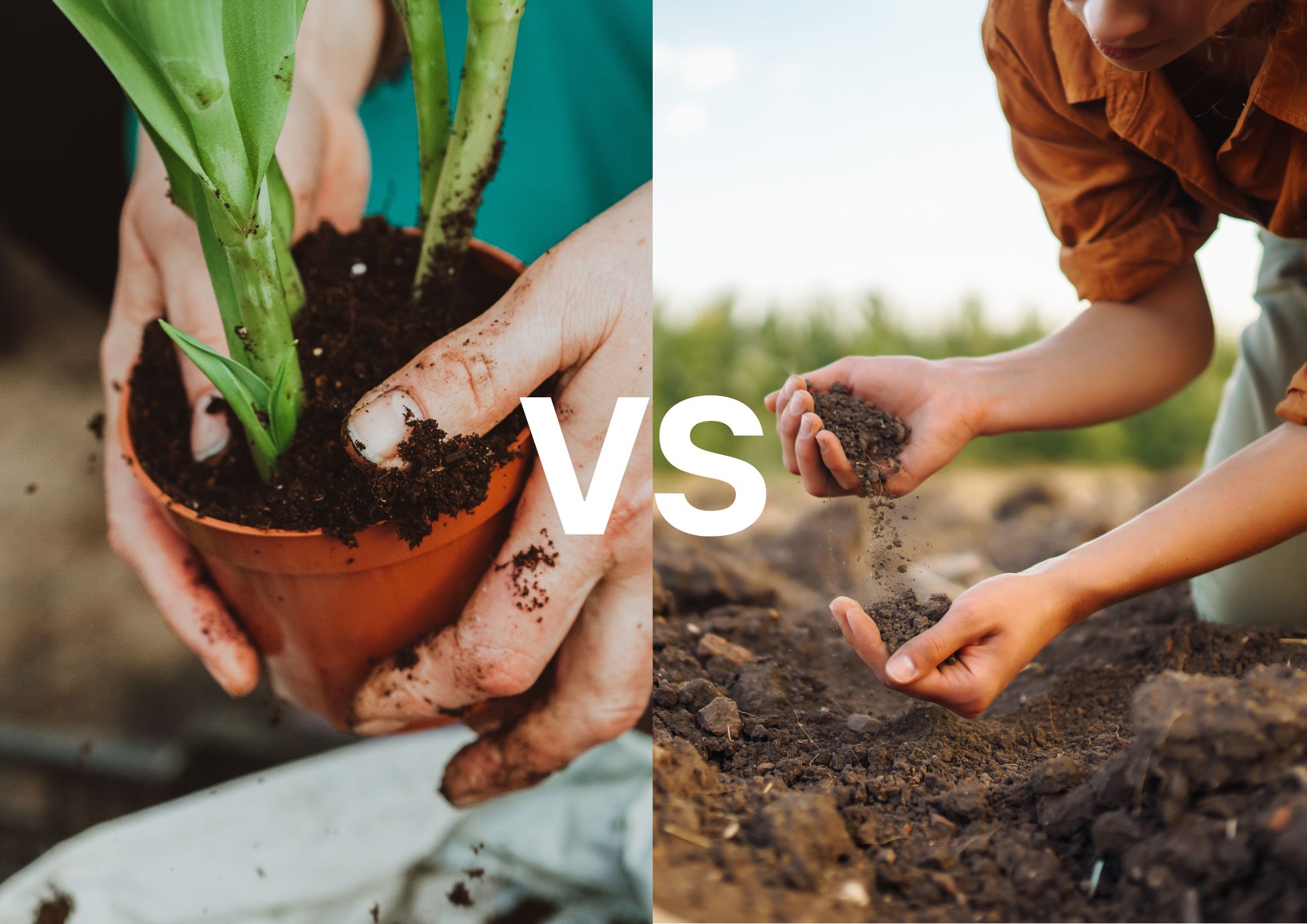

Choosing the best soil for your gardening needs can significantly affect your plant health and yield, so it is crucial to understand that there is a difference in Garden soil, Potting soil and Potting mix features and importance. Especially when Potting soil is commonly used as a synonym for Potting mix, but actually they are not quite the same and understanding the differences between these types of media is essential for successful gardening. Each serves distinct purposes, and using them appropriately can significantly impact plant health and growth.
Looking for ideal potting media for your plants? Visit our Peat Substrates for Plant Potting section to learn more about our products!
What is Garden Soil?
Garden soil is a natural mixture of mineral particles, organic matter, water, and air. Its composition varies based on location and can include clay, silt, and sand. The organic matter enriches the soil with essential nutrients like nitrogen, phosphorus, and potassium, improving soil structure and fertility.
Characteristics of Garden Soil:
- Nutrient rich – This soil type provides essential minerals needed for optimal plant growth.
- Heavier but Variable Texture – Depending on the mineral content, it can range from sandy to clayey, affecting drainage and aeration. Its denser structure can help with moisture retention, but you have to make sure if your plants has proper drainage to prevent unnecessary root rot. Learn more about What is well drained soil in this guide article.
- Supports long-term plant growth – Very good for plants that has a deep root systems or heavy upper part of the plant, so it is important that the soil can press down on the root of the plant and keep it upright.
- Microbial Activity – Contains beneficial bacteria and microbes that support plant health.
When to Use Garden Soil?
- In-Ground Planting – Ideally suited for outdoor gardens where the plants are grown directly in the ground.
- Soil Amendment – You can use this soil to optimize and improve existing soil’s structure, enrich it with nutrients and boost the moisture retention.
- Raised Beds – It can also be very good for raised garden beds, can be mixed with compost so the soil is more fertile and you can get the best results out of the process.
Learn more about how to use garden soil in this article.
What is Potting Soil?
Potting soil usually used as a synonym for Potting mix, but actually they are not quite the same. Potting soil which in some internet sources is claimed the one that is not containing soil actually is a mixture that includes mineral soil and other ingredients, such as compost, to enhance its texture and nutritional value. It is typically denser and heavier, making it suitable for outdoor gardening applications.
Characteristics of Potting Soil:
- Contains Soil – Includes natural soil components, which can vary in type (e.g., clay, sand, loam).
- Enhanced with Organic Matter – Often mixed with compost or other organic materials to improve fertility.
- Suitable for Outdoor Use – Ideal for in-ground planting and raised beds where soil structure is beneficial.
When to Use Potting Soil?
- Outdoor Containers – Suitable for large outdoor planters where weight and soil structure can support plant stability.
- Specific Plant Needs – Beneficial for plants that require a denser medium with higher nutrient content.
What is Potting Mix?
And finally we get to the actual soilless media – Potting mix, which is a sterile, lightweight medium designed specifically for container gardening. It typically includes components like peat moss, perlite, vermiculite, or coconut coir.
Characteristics of Potting Mix:
- Soilless Composition – Contains no natural soil, reducing the risk of soil-borne diseases and pests.
- Excellent Drainage and Aeration – Designed to prevent waterlogging and provide roots with adequate oxygen.
- Lightweight – Easier to handle and ideal for indoor or hanging containers.
When to Use Potting Mix?
- Container Gardening – Essential for potted plants, hanging baskets, and window boxes due to its lightweight nature and excellent drainage.
- Indoor Plants – Provides a clean, disease-free medium for houseplants.
- Seed Starting – Offers a fine-textured, sterile environment, which is ideal for germinating seeds and promoting healthy seedlings.
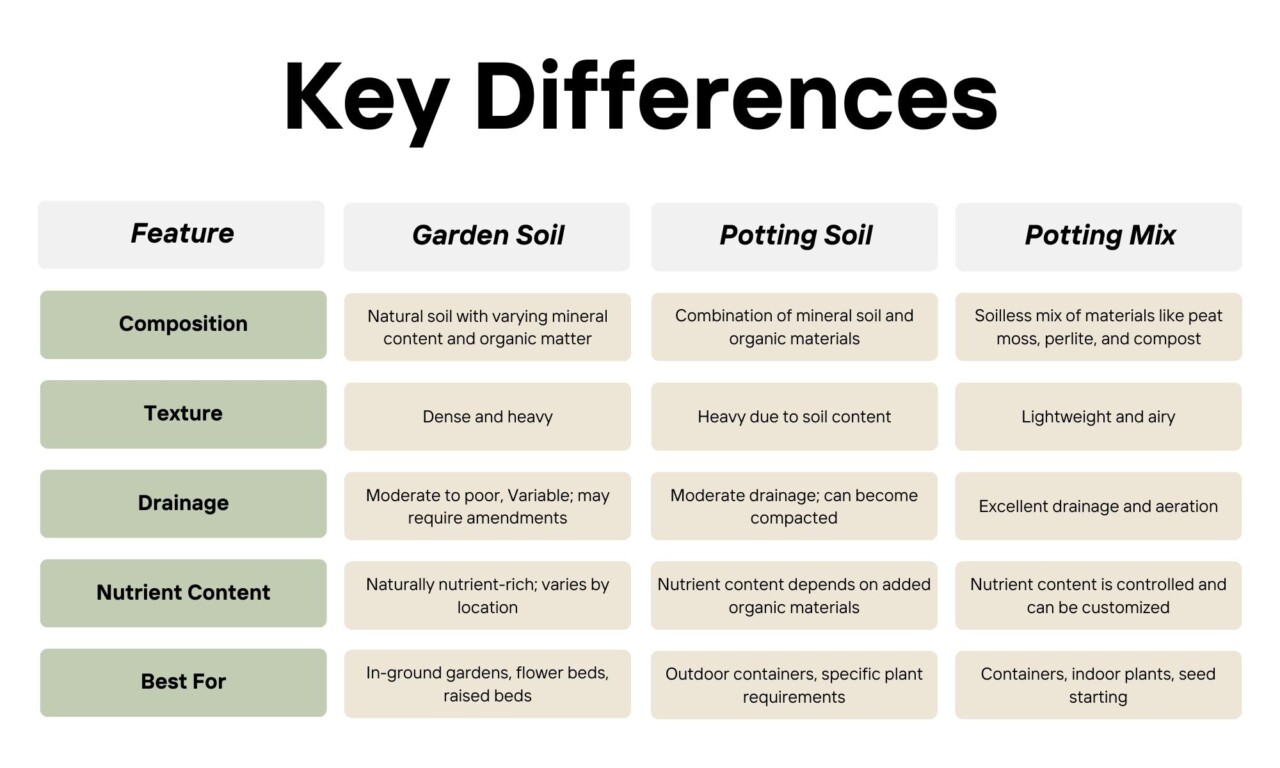
Can You Use Garden Soil or Potting Soil in Containers?
Using Garden soil or traditional Potting soil in containers is generally not recommended. Their dense nature can lead to compaction, poor drainage, and limited aeration, which can harm root health.
Potting mix is specifically designed to overcome these challenges, providing an optimal environment for plants to be grown in a different kinds of containers.
Conclusion
Choosing between Garden soil, Potting soil, and Potting mix depends on your specific gardening needs, so here is the main conclusions that should help you to make your choice easier.
Garden soil is best suited for in-ground applications, offering natural nutrients and supporting robust plant growth.
Potting soil, containing natural soil components, is suitable for certain outdoor applications but may not be ideal for containers.
Potting mix, with its tailored soilless composition, is ideal for containers, ensuring proper drainage, aeration, and a disease-free medium.
By selecting the appropriate soil type, you create a foundation for a thriving and healthy garden.
